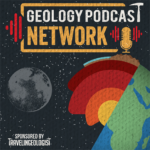
Do you enjoy learning new things in all fields of geosciences? Do you have a soft spot for shenanigans? Then this podcast is just for you! In this podcast, Dr B. interviews interesting geoscientist with interesting stories.
To skip the game jump to minute 5:00
Resources mentioned in this episode:
Go back and listen to the previous GC episodes:
https://www.travelinggeologist.com/geology-podcast-network/
Lucia’s webpage https://www.luciaperezdiaz.com/
Tektonika https://tektonika.online/index.php/home
The Flat Type https://linktr.ee/theflattype
QUARTETnary https://www.quartetnary.com/
Dr Fabio Crameri’s paper https://doi.org/10.1038/s41467-020-19160-7
Send us your suggestions at gneisschats@gmail.com
follow on Twitter:
@drperezdiaz
@theflattype
@QUARTETnary
@WeAreTektonika
@GeoDrB
@travelinggeolog
@silvia_volante
follow on Instagram:
@geodrb
@travelinggeologist
follow on Facebook:
@travelinggeologist
Co-Host Information:
Dr. Vitor Barrote: A member of the Traveling Geologist team and the host for Gneiss Chats on the Geology Podcast Network. Vitor, also known as Dr. B, has a PhD in applied geology from Curtin University. His current research focus is on analytical developments in geochemistry and geochronology, but he has a soft spot for Economic Geology, also. He enjoys multidisciplinary studies that apply unorthodox and innovative solutions to resolve unusual problems. He is a big fan of spreading education through inclusive media, with science outreach efforts such as this podcast series. He also holds an (honorary) PhD in geological dad-jokes.
Co-Host Information:
Dr. Silvia Volante: A member of Traveling Geologist team, producer and occasional co-host for Gneiss Chats on the Geology Podcast Network. Silvia also has a PhD in applied geology from Curtin University. She loves to explore the different pressures, temperatures and compositions conditions at which igneous and metamorphic rocks formed. Her favorite word? Unravelling! Unravelling the evolution of basement rocks by mapping them in the field, as a good old-fashioned field geologist would do, and investigating the record incapsulated in minerals that define ductile fabrics and, why not, that can also be dated!
![]() This work is licensed under a Creative Commons Attribution-NonCommercial-ShareAlike 4.0 International License.
This work is licensed under a Creative Commons Attribution-NonCommercial-ShareAlike 4.0 International License.
